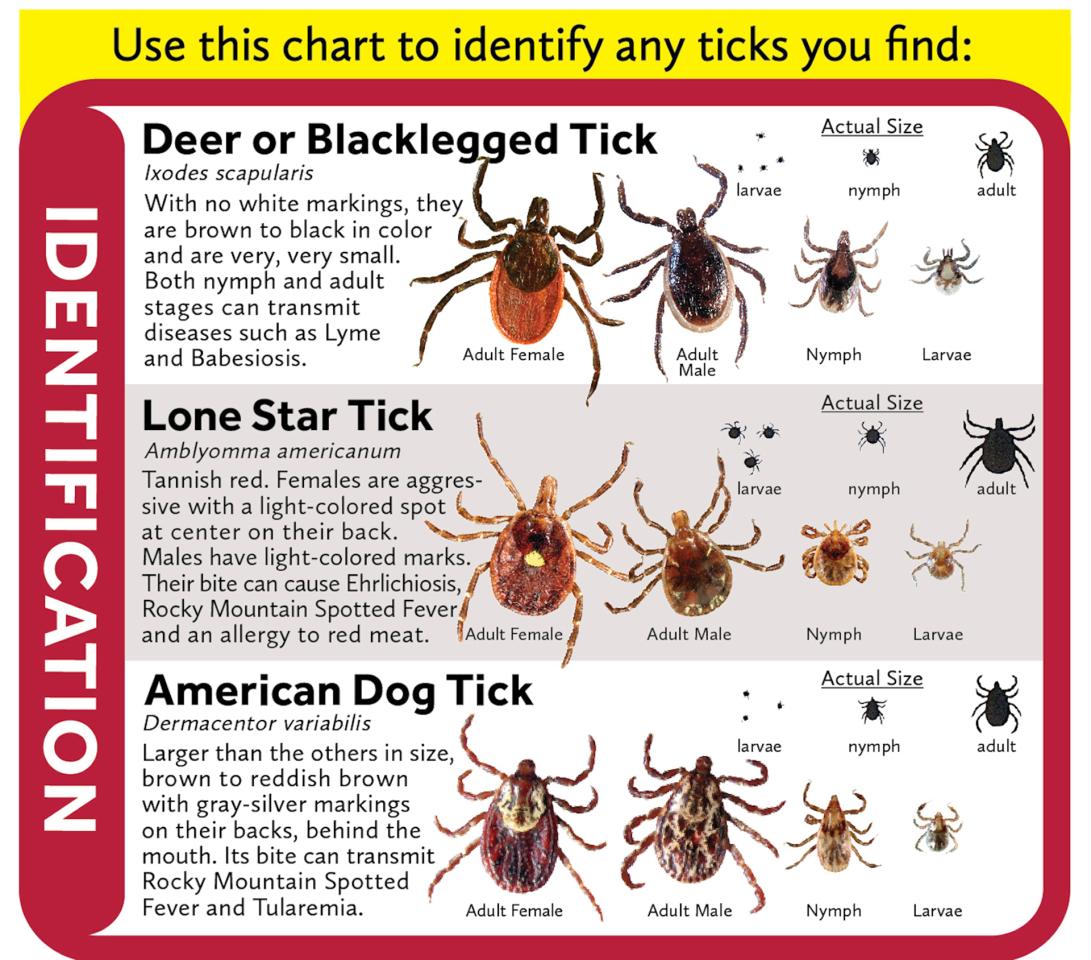Tick Control
The occurrence of Lyme Disease is rapidly increasing in this area and the effects of the disease can be debilitating and long lasting. While Lyme Disease is a significant threat, ticks can also transmit several other diseases, which can have even more severe consequences than Lyme Disease. Reducing your exposure to ticks is the best preventative for these diseases at this time.
Our Tick Control Program
Meadowbrook Gardens uses a low-dosage Pyrethroid insecticide in a four application program.
Typical Timing
- Early Spring (March - April) Controls overwintering adults
- Late Spring (May - June) Controls nymphs (critical impact on populations)
- Summer (July - August) Controls nymphs and young adults
- Fall (Sept - Oct) Controls adults throughout cool months
Cost per application for a “typical” (1/2 acre) yard would be approximately $129.00. Each application lasts between three and six weeks depending on the weather. You will be billed after each application.
Meadowbrook Gardens sprays under CT DEEP Supervisory License #S-2659, business license B-2772. Spray timing will depend upon local weather conditions and seasonal forecasts.
We spray the following areas around your property:
- Lawn or yard perimeters (10’ band on both sides of any grass/woodland border)
- Ornamental ground cover that is in shaded areas (i.e.: Pachysandra)
- Landscape beds that are shaded
- Stone walls & leaf litter
- Brush & wood piles
- Low brush (ticks are not usually found above 36")
- Tips of tall grass and weeds
- Under porches and sheds
MORE ABOUT TICKS
Ticks go through four life stages: egg, larva, nymph and adult. They evolve from one life stage to another by molting. Each of these last three stages requires a blood meal from a host, and if the tick feeds on an infected host animal, the tick becomes infected. Ticks that are infected with Lyme Disease can retain the infection throughout their life and are able to transmit the infection to subsequent hosts. These ticks can be anywhere: in the woods, in the fields, by the seashore and even in your own backyard. Ticks are not killed by freezing temperatures and they can live for 200 days without food and water. While they can be active & bite year-round, peak tick season in the Northeast is April through September.
We can significantly reduce the tick population and lower the exposure risk for tick-borne diseases with a four-application program. The first application in the early spring months helps to control the adult tick population. The second & third applications, in the high-risk periods of late spring and mid to late summer, are the most critical, targeting the nymphal ticks when they reach their peak activity. The fourth application in the fall helps to control the adult tick population through the fall and winter. In years with a shorter dormancy period, five applications may be necessary.
Currently, the use of a low-dosage Pyrethroid insecticide is the most effective means of reducing ticks in residential and recreational areas. Ticks are extremely small and require a very little amount of spray for quick control. We use an odorless low-dose Pyrethroid insecticide (TEMPO 2E, Bifenthrin IT or permethrin) that is safe for humans & animals. You will be able to use the treated areas in approximately 1 hour after it dries.
We also have natural alternatives available. Cedar oil is an effective natural pesticide with a pleasant aroma. The spraying interval for cedar oil is shorter, requiring more applications per year to achieve similar control.
Although deer are the most infamous transporters of ticks, there are other major vectors through common yard wildlife such as chipmunks, squirrels, mice, and birds. Our treatment program targets the areas of your yard that these creatures inhabit and traverse.

